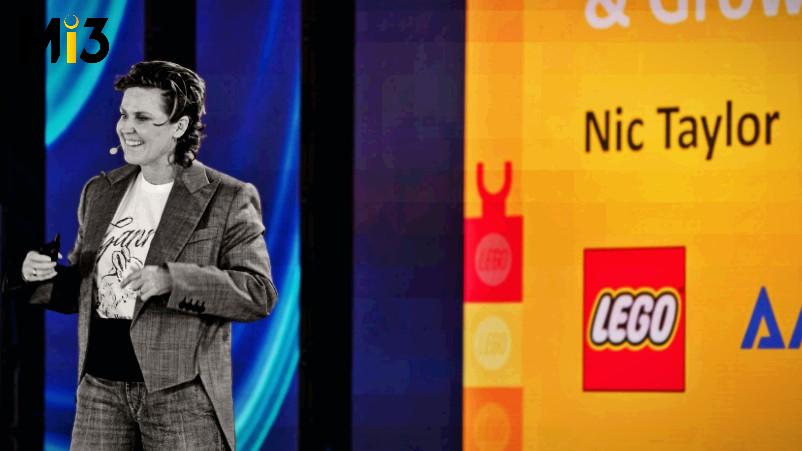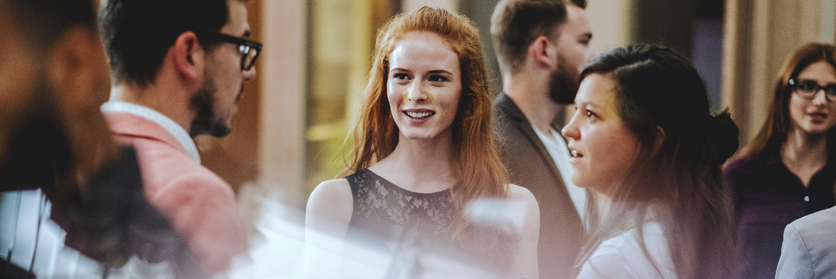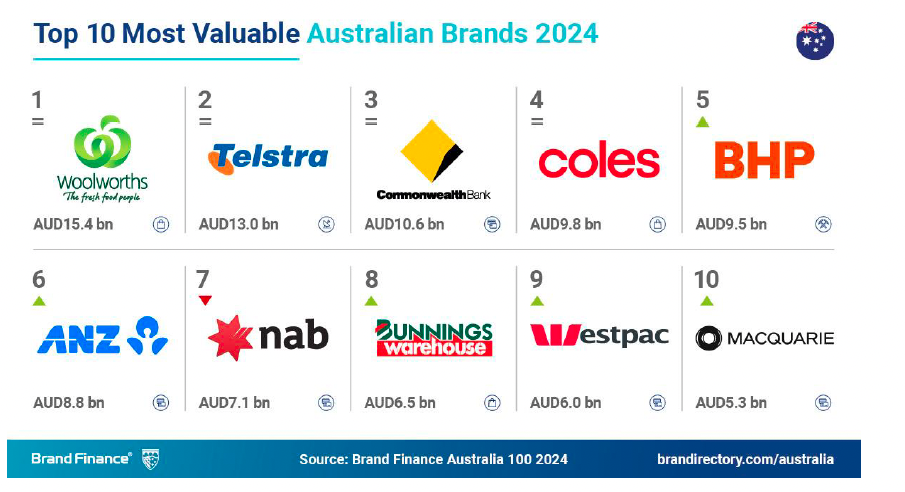Lego’s in-house model clicks into place: Nicole Taylor on creative firepower, expanding remits, paid-owned shift, when to say no – and bringing in big hitting agencies on her terms

What you need to know:
- Just over two years into her role as SVP and head of Lego’s in-house agency, Australia’s Nicole Taylor says she’s witnessed a transformation of the role of marketing and her 420-strong team as it shifts from advertising creative to the business of content supply.
- Among the most recent changes is Lego’s first VP level creative, a role driven by Lego Agency’s workload increasing and expectations of that work evolving in the world of less paid media and more earned, owned and shared engagement.
- The bigger cultural shift meanwhile has been recognising that when the team gets a brief, “you don’t have to deliver on absolutely everything”. As Taylor puts it: “I stopped the automatic response.”
- Better measurement and utilisation are critical in ensuring the in-house agency is working effectively and responsibly, Taylor says – as well as recognising the short and long-term brand affect content can have for Lego.
- While Lego Agency is doing the bulk of the work today, Taylor remains open to external agency partnerships – though she stresses the brief and strategy are owned by her team.
Sometimes I'll ask a really high level creative agency to come in on a big brief. But we work with them, we don't hand the brief over. Not every agency wants to work like that with us. That's fine. But for us it’s about working with our teams … as opposed to saying /here, have the brief and we'll see you in a month'.
Clicking into place
It’s been a transformative two years for Lego SVP and head of Lego Agency, Nicole Taylor, since switching from external agency to in-house agency leader in the group’s HQ in Billund, Denmark – and the shape-shifting keeps coming.
One recent decision was to bring in Lego’s first dedicated creative lead, Carlo Cavallone. The former 72andSunny chief creative officer is the first VP-level creative leader to join the still privately owned toymaker.
“He’s a gentle, beautiful, very talented creative and gives us an extra layer of creative leadership,” Taylor told Mi3 on the sidelines of this month’s AANA Reset event. The appointment is a direct reflection of the expansive remit of Lego’s in-house agency – and a fundamental building block for what comes next.
“It became a very obvious role for me to bring in. Our workload was increasing, the expectations of that work were evolving because we’re now in the world of less paid, plus how we are really cutting through and thinking in the right way. I needed a partner in that mission,” she said. “We’ve got a lot of people and briefs, so it was time for us to have that level of leader in our organisation to help. Carlo’s really inspiring and is taking us to the next level.”
Owned, shared shift
For Taylor, leading Lego’s in-house agency is about making choices that evolve the way the brand arrives and resonates in market.
“That’s not because the company is doing anything wrong or not keeping pace. It’s because the world is changing significantly,” she said. “Our marketing model is shifting into more owned spaces, more shared spaces. This is about really recognising we’ve got to make those changes to meet those needs.
“The practice of that shift is different and new. It has been my job to make sure we’re going in the direction of travel, which is a little different. How we work internally is different as a consequence, along with how we allocate money as well as think about content versus media. All those questions come up. Meanwhile, every organisation builds muscle memory around the way they do things.
“We are definitely on a marketing transformation journey, like every great brand in the world. But I feel we have many levers and opportunities to make that a reality.”
Even in a dour economic market, Lego’s successes are apparent. The group reported 4 per cent increase in consumer sales in 2023, even as the whole category was in decline, growing its market share. Overall, it reported 2 per cent revenue in 2023 to DKK65.9 billion (AUD$14.4bn) off the back of consecutive years of double-digit growth, and holds the title of most loved brand in the world.
In-store experience is a key and growing part of this mix, and Lego grew its branded store footprint by 147 in 2023 to more than 1,000 globally. Partnerships are another, and during her presentation at AANA Reset, Taylor touched on several dynamic collaborations including those with Fortnite, Star Wars/Disney, music artist Pharrell and community coaching group, Leadership Playground.
I stopped the automatic response. I know all those boxes are ticked as an outcome, but I'm not sure or not convinced on those. I asked the team: What happens if we supply half of that? Is it going to cost us impact? Because you can get stuck in this space of making, right? That's also why I've put utilisation into the conversation – to make sure we're doing the things that matter.
Building new model
Marketing is of course as much about what you say no to as it is about the things you do, and it’s been no different for Taylor.
“I’ve killed some meetings. There were too many meetings and it really got in the way of creativity. So I just said we’re not doing those meetings anymore,” she said. “It’s a trust thing and a muscle that needed to be built. Meeting culture can be a problem – there are a lot of meetings about meetings sometimes.”
A bigger mindset shift is recognising that when you get a brief you don’t have to deliver on absolutely everything.
“I stopped the automatic response. I know all those boxes are ticked as an outcome, but I’m not sure or not convinced on those,” Taylor said. “I asked the team: What happens if we supply half of that? Is it going to cost us impact? Because you can get stuck in this space of making, right?
“That’s also why I’ve put utilisation into the conversation – to make sure we’re doing the things that matter.”
The overarching disruptor in all this is the shift away from ‘advertising creative’ towards recognising Lego’s in-house agency as being in the business of content supply.
“I don’t want to take away the creative and emotional aspects of what we do, but you’ve got to supply content to serve so many channels and a more complex ecosystem, and do that in a way that can respond to signals and other things,” Taylor said.
“Where we have evolved is again reflective of these changes in the paid media landscape, and the way markets activate. They’re not just buying media anymore, they’re looking more at things like experiential activities and our stores, which work so well for families. There’s the gaming space too, but for us it’s about doing that in a way that’s original and in keeping with our values.”
Broadening the scope to content supply has brought with it more cross-functional collaboration. Take the fact Lego has digital engagement, product and partnership teams that don’t sit within the internal agency, but alongside it.
“It’s not as simple as creating a campaign, you have to think about the assets that can be served on behalf of data signals and in reactive mode as opposed to a brief coming in – we’re getting done and working backwards. Technology obviously plays a big role in that too,” Taylor said.
We can get it wrong too, right? Plus there's lots of nuance in our brand and the audience itself, which can create differences and challenges. But I love that. Imagine David Droga picking up the phone to Dan Wieden and going, work me on this brief. That's what I imagine sometimes.
Creative extensions
Recent figures from the In-House Agency Council (IHAC) found as many as 78 per cent of Australian marketers are using some form of in-house agency today. The report also suggested the volume has shifted from 70 per cent external and 30 internal, to 70 per cent internal and 30 per cent external. The numbers are in dispute, but there’s no doubt in Lego’s case the bulk of work is done globally by Taylor’s 420-strong in-house team.
That doesn’t mean Lego isn’t tapping external support when it feels it needs to however, although Taylor cited her team’s closeness to product and its knowledge around children, Lego’s core audience, as something agencies find hard to get as close to.
“Connecting with kids isn’t easy, they’re a really hard audience to crack. We’ve always had this really developed skill for that, which I’ve loved and that existed well before me,” she said. “I don’t think we’ve found the perfect model and ratio yet [of in-house to external], but I want both – a really robust, amazing team that’s building on the amazing theme that we already have, then bringing in externals for some of the process.
“We can get it wrong too, right? Plus there’s lots of nuance in our brand and the audience itself, which can create differences and challenges. But I love that. Imagine David Droga picking up the phone to Dan Wieden and going, work me on this brief. That’s what I imagine sometimes.”
In Lego’s case, working with external production as well as fast turnaround partners often comes “because we have problems with the capacity sometimes”, Taylor says.
“Then sometimes I’ll ask a really high level or renowned creative agency to come in on a big brief as we just need a good outside-in perspective. But we work with them, we don’t hand the brief over,” she said. “That’s the difference. That’s not everyone’s preference; not every agency wants to work like that with us. That’s fine, too. But for us it’s about working with our teams … as opposed to saying here, have the brief and we’ll see you in a month.”
Talent crunch?
While she didn’t want to appear too cocky, Taylor said it’s not hard to recruit talent given the diverse opportunities coming her team’s way.
“I was talking to Carlos [Cavallone, the new creative lead] about this and he said to me, ‘Nick, the number of good briefs we get given here, compared to external is huge; you’d be waiting all year for two or three of these, they’re just a constant opportunity to create’,” she said.
In fact, given Taylor is sitting in all the meetings, there’s an argument the in-house Lego team doesn’t even need briefs anymore given how much it knows about what’s coming.
“We know what the hook should be, and we can just get started,” Taylor agreed, adding there’s increasingly less back and forth before getting stuff done.
“Where it gets complex is there are almost too many opportunities. So we have to make choices and be thoughtful. We have endless audience and creative opportunities. It never feels the same, even though it’s a really clearly articulated brand. It always feels like there’s some reinvention or a new way of taking Lego to market. And because we’re working alongside the designers, lots of partners and other brands, we’re getting inspiration from everywhere.”
Number blocks
Taylor’s next priority is bringing further discipline and measurement into play. She argued the team is “much better at measurement around effectiveness” than when she started, agreeing market mix modelling is one of the best things that’s happened to modern marketing teams in pursuit of both short and long-term brand growth.
“We really pay attention to the components of the brand, meaningfulness, differentiation and of course, salience. We watch the game. If meaningfulness isn’t as high as it should be with kids, what we can do about that. We take notice of that,” Taylor said. “I know this sounds really practical, but utilisation is also a thing for us. I’m a global leader and I’ve got these people working hard, caring about the product we’re making. We want to make sure it’s used in every market.
“So the processes exist – I think comes back to confidence in the team. Again, that’s why someone like Carlo is there – we have real experts. Because that can be an internal issue. The lines blur, people see us as colleagues, things can drift, and people don’t always like saying no. I can say no. Let me have the conversation, but only in service of the business and the brand, of course not for any other reason.”





